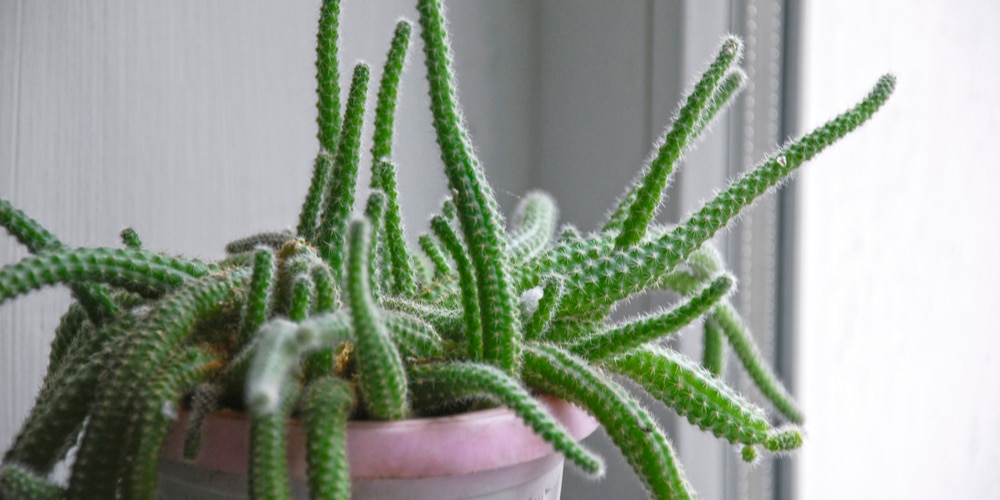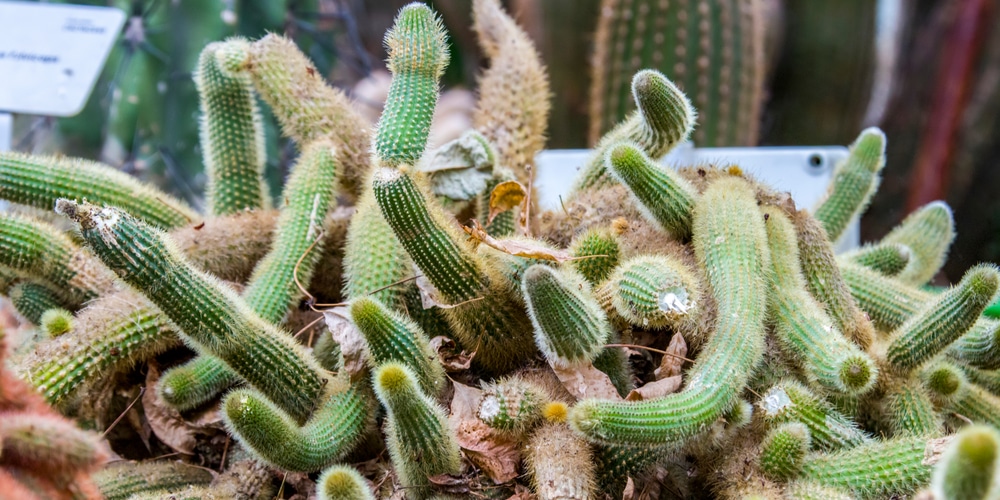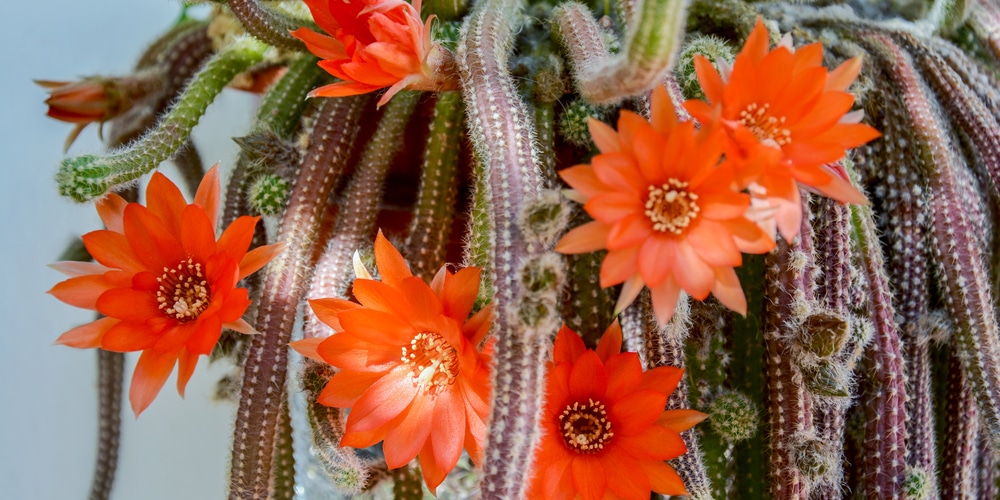The Rat Tail Cactus is an interesting plant species that has a rather distinctive characteristic. In your home, the Mexico native will do quite well in a variety of environmental conditions, including outdoors or as a houseplant.
Here’s a closer look at the Aporocactus flagelliformis and how you can care for and maintain the plant.
Rat Tail Cactus | Aporocactus flagelliformis
The Aporocactus flagelliformis got its nickname ‘rat tail’ because of its rat-like stems that can grow up to 4 feet (or 48 inches) in length. The succulent’s stems tend to be a bit floppy and can sometimes hang down at the edge of their pot or container.
The texture is similar to a rodent’s appendage as well, with spikes forming a dense, ropey pattern to further bring the ‘rat’s tail’ point home.
Rat tail cactus foliage color starts out as dark green but tends to turn beige or light yellow as they age. If you’re lucky enough you’ll be able to witness large, orchid-like blooms that are normally bright pink or red violet, and sometimes orange in late spring to early summer.
Most gardeners tend to place their rat tail cactus in potted containers for hanging, or indoors as a point of interest in their homes. That said, caring for a rat tail succulent is fairly easy because these plants can adapt to a wide range of environments.
How to Care for a Rat Tail Cactus
Aporocactus flagelliformis is an easy-going plant with very few requirements. Other than getting adequate lighting, the succulent doesn’t need that much attention from you. The more important aspects of caring for a rat tail are done early on, such as when you’re choosing the site and soil where the plant will be grown.
Give your rat tail cactus an optimal environment and it will thrive for years to come.
Light Requirement
Rat Tail Cactus is native to Mexico and thus likes to receive full sun when possible. The succulent thrives in USDA regions 9 to 11 and a dry desert climate.
This gives you several options on where you can grow your rat tail- outdoors and where it can get direct sun throughout the day, or indoors, where it gets bright light. As a houseplant, you’ll want to place your rat tail cactus in a south-facing window.
Avoid exposing your cactus to frost and freezing temperature and you get to see it thrive next year. It’s recommended that you overwinter, or bring your rat tail indoors when the weather is getting cold.
Soil Requirement
You may be surprised to know that Rat Tail grows in the unlikeliest places in the wild, but it’s true. The plant can grow in cracks, crevices, and places that don’t have a lot of soil content.
As a plant or garden specimen, it’s best to give your rat tail cactus a loose and freely-draining medium that has a lot of gravel and sand. A premade succulent or cactus mix that contains perlite or vermiculite is best so you can prevent root rot and other fungi-related problems.
Rat tail cactus can be grown in a normal potting or garden soil mix, but you will have to adjust your watering schedule.
Watering Requirement
Watering a rat tail cactus is the same as watering your other succulent plants. Less water is more for these species since they are very good at storing moisture in their stems and leaves. They’re also naturally drought tolerant and can survive with just rainfall.
Early on, you’ll want to give your rat tail regular watering and just enough to keep the soil moist but not overly wet. To do this, just tap the surface of the soil with your finger to determine if it needs watering or not. Moist soil means you can wait several more days before you reach for the watering can. You can also use a moisture meter or something similar to gauge hydration levels.
How to Propagate a Rat Tail Cactus
Propagating a rat tail cactus is easy and only requires a few steps. Stem cutting is a common way to get more plants to add to your interior or exterior landscape, or for giving to friends.
The only equipment you need to propagate rat tail is a pair of scissors or small garden shears. Disinfect with rubbing alcohol first to prevent plant infections with the wound.
Then, select a lengthy stem and cut off about a specimen that’s 3 to 5 inches long. Allow the cut to dry out for two or three days before potting it in a small container.
Make sure to wear gloves and protective glasses during the process. Keep the soil medium moist by spraying with water every two or three days, or when the surface of the soil is dry to the touch. After a month or two you should have a new rat tail cactus plant.
You May Also Like: Bunny Tail Grass Care


